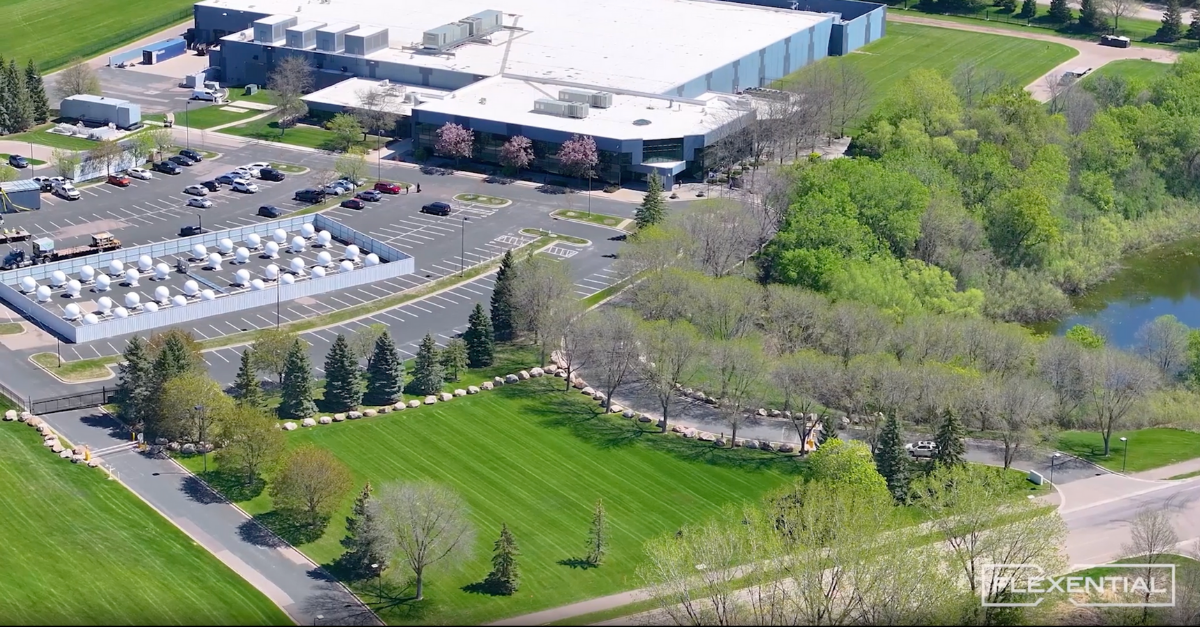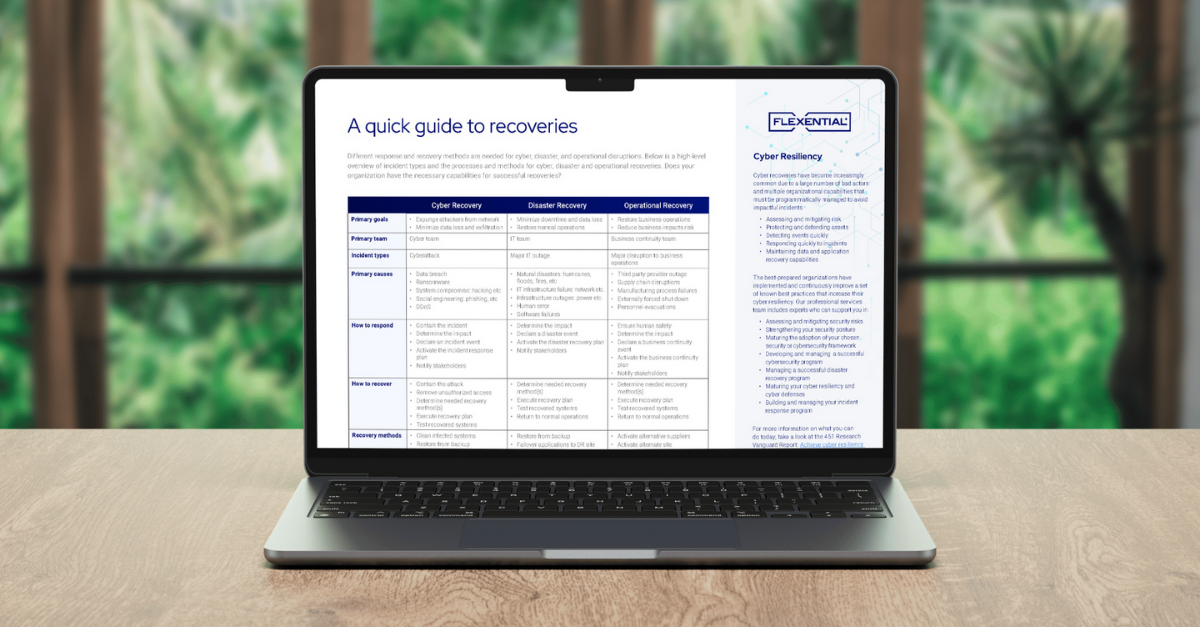Disaster recovery best practices guide for business resilience
Unplanned outages, whether due to cyberattacks, natural disasters, or system failures, can halt business operations and cost thousands in lost productivity. Fast, reliable recovery is essential. Disaster recovery is your company's insurance policy against chaos. It's what turns a potential catastrophe into a manageable hiccup...but only if the plan is sound and ready.

This guide breaks down actionable disaster recovery best practices and explores how modern solutions like Disaster Recovery as a Service (DRaaS) can simplify protection and speed up recovery.
What disaster recovery and DRaaS really mean
Disaster recovery restores access to IT systems, data, and applications after a disruption. It's a core part of any business continuity strategy, and when done right, it can mean the difference between a quick bounce back and days of costly downtime.
Traditional DR methods often struggle with scalability and upkeep. DRaaS changes the game, offering offsite replication, failover capabilities, and expert support via a managed service. This makes enterprise-grade protection more attainable for businesses of all sizes.
Building a foundation: The four pillars of disaster recovery best practices
The best DR strategies are proactive and aligned with business objectives. These four pillars help build a foundation of resilience:
Technology and infrastructure readiness
- Maintain a current inventory of IT assets across cloud, on-prem, and hybrid environments.
- Align infrastructure with RTO (Recovery Time Objective) and RPO (Recovery Point Objective) targets.
- Leverage tools like virtualization, cloud replication, and automated failover.
- Consider partnering with professionals who specialize in disaster recovery design and planning
Building a solid DR plan
A written, actionable disaster recovery plan is non-negotiable. It should clearly define:
- Define critical systems and recovery priorities.
- Assign clear roles and responsibilities.
- Outline communication protocols and third-party contact info.
- Include compliance and security measures.
Guiding steps on recovery procedures
Documented recovery procedures give your team a clear path forward under pressure. This includes instructions for:
- System restoration and configuration
- Data backup validation and recovery
- Network failover and routing
- Cloud service restoration
Regular testing and continuous improvement
Testing isn’t just a checkbox; it’s how you prove your plan actually works.
- Run scheduled and surprise drills simulating events like ransomware or regional outages.
- Conduct post-test reviews to identify gaps.
- Update the plan regularly as infrastructure and threats evolve.
The importance of a disaster recovery team and plan
No plan works without the right people. Build a cross-functional DR team including:
- IT leaders
- System and network admins
- Security experts
- Key business stakeholders
Ensure everyone knows their role during a disruption—who leads, who communicates, who escalates.
For a deeper breakdown of what a disaster recovery team is and who should be included, check out our full guide. It covers how to build the right mix of technical and operational expertise, and how to keep that team ready as your environment evolves.
Prioritizing recovery: The case for tiered IT workloads
Not every system needs instant recovery. A tiered approach ranks workloads by importance and aligns them with corresponding RTO/RPO targets.
Benefits:
- Prevent over-investing in low-priority systems
- Ensure fast recovery for mission-critical services
- Improve clarity and execution during emergencies
If you’re not sure where to start, our guide on cost-effective strategies for disaster recovery offers practical ways to build smarter protections without overspending.
The disaster management lifecycle
A resilient DR strategy covers four phases:
- Prevention and mitigation – Identify risks and implement safeguards.
- Preparedness – Build and test recovery plans.
- Response – Execute recovery during an event.
- Recovery – Restore operations and analyze outcomes.
These stages support one another. For example, testing (preparedness) can reveal risks (prevention), and post-incident analysis (recovery) can enhance your next response.
Safeguarding against emerging IT threats
Modern threats, like ransomware, supply chain attacks, and cloud misconfigurations, require updated recovery plans.
Best practices now include:
- Encrypted, isolated backups
- Role-based access and multi-factor authentication
- Ransomware response scenarios and data integrity validation
For more on how to align your disaster recovery approach with today’s realities, explore our blog on the top five disaster recovery risks and how to reduce exposure.
Cloud-based DR: New tools, same principles
Cloud DR offers agility and cost savings, shifting recovery to scalable cloud environments.
Advantages include:
- Lower infrastructure costs
- Scalable, testable recovery environments
- Automated replication and failover
That said, cloud-based DR still needs to follow the same planning, testing, and security principles as any DR strategy. If you’re evaluating whether the cloud is the right fit for your business, our blog on why choose cloud DRaaS outlines key benefits and trade-offs.
Leveraging Flexential expertise
Disaster recovery planning takes time, expertise, and constant iteration, and most IT teams are already stretched thin. That’s where Flexential comes in. Our team of DR experts helps organizations design, implement, and manage recovery strategies tailored to their workloads, risk tolerance, and compliance needs.
Ready to reassess your DR approach? Contact us to get started.
Get the Disaster Recovery Handbook
Looking for more? Our Disaster Recovery Handbook provides practical tools, expert insights, and checklists to help you build a stronger, more reliable recovery strategy.
Whether you're starting from scratch or optimizing what you already have, the handbook gives you a clear path forward.
FAQs about disaster recovery best practices
What are disaster recovery best practices?
They are the key steps and principles businesses follow to ensure fast, effective recovery after an IT disruption. These include having a clear plan, testing regularly, and aligning recovery with business priorities.
Why is a disaster recovery plan important for business continuity?
A DR plan helps minimize downtime and data loss, keeping essential systems running and supporting overall business operations during unexpected events.
How often should disaster recovery plans be tested?
At least once a year, or any time you make major changes to your systems, infrastructure, or business structure.
What’s the difference between disaster recovery and business continuity?
Disaster recovery focuses on restoring IT systems. Business continuity is broader, ensuring the entire organization can operate through and after a disruption.
How can cloud solutions improve disaster recovery?
Cloud-based DR offers faster recovery times, lower infrastructure costs, and easier testing, all with greater flexibility.
What are the key components of an effective disaster recovery plan?
An asset inventory, risk assessment, documented procedures, defined roles, communication plans, and regular testing.
What role does cybersecurity play in disaster recovery best practices?
It ensures your backups and recovery processes are protected from threats like ransomware and data breaches.







